The 1943 nickel features two primary error varieties highly sought by collectors. The 1943/2 overdate shows the numeral “3” struck over a “2”, making it the only overdate in the entire Jefferson nickel series. The doubled die obverse (DDO) displays distinctive doubling on Jefferson’s eye, appearing as “two left eyes,” plus visible doubling on “Liberty,” “In God We Trust,” and the date. This DDO is one of only three major doubled die coins in the series and the sole variety with obverse doubling. To identify these errors, use a 5x magnifying glass to examine the date for underlying numerals and Jefferson’s eye for multiple impressions. Both varieties are significant collectibles with premium values.
The 1943 nickel holds a unique place in American coinage history as the first year of the wartime composition change. With silver content replacing nickel due to World War II metal rationing, these coins not only carry historical significance but also present collectors with valuable error varieties worth hundreds or even thousands of dollars. Understanding what makes certain 1943 nickels valuable can turn pocket change into profit.
The Wartime Silver Composition That Changed Everything
In October 1942, the United States Mint altered the Jefferson nickel’s composition to conserve nickel for the war effort. The 1943 nickel contains 35% silver, 56% copper, and 9% manganese—a dramatic shift from the traditional 75% copper and 25% nickel composition. This change resulted in 271,165,000 Philadelphia nickels, 15,294,000 Denver nickels, and 104,060,000 San Francisco nickels being struck with the new composition.
The easiest way to identify a wartime silver nickel is by checking for the large mint mark above Monticello on the reverse. Philadelphia pieces display a prominent “P” mint mark—the first time this mint used such an identifier on nickels. Denver coins show a “D,” while San Francisco examples bear an “S.” The placement and size of these marks distinguish wartime nickels from standard issues.
According to current precious metal values, the silver content alone in a 1943 nickel provides a melt value of approximately $1.20 to $1.50, establishing a price floor for even heavily worn specimens. However, condition and rare error varieties can push values far beyond this baseline.
Standard 1943 Nickel Values Across Mint Marks
| Grade | 1943-P | 1943-D | 1943-S |
|---|---|---|---|
| Good (G-4) | $1.50 | $1.75 | $1.60 |
| Fine (F-12) | $1.75 | $2.00 | $1.85 |
| Extremely Fine (EF-40) | $2.25 | $2.75 | $2.40 |
| About Uncirculated (AU-50) | $3.50 | $4.50 | $3.75 |
| MS-63 | $8.00 | $12.00 | $9.50 |
| MS-65 | $22.00 | $45.00 | $28.00 |
| MS-67 | $185.00 | $425.00 | $225.00 |
These values represent typical asking prices from Heritage Auctions and PCGS CoinFacts data as of 2023-2024. The 1943-D commands premium prices due to its significantly lower mintage—only 15.3 million compared to 271 million Philadelphia strikes. Pristine examples grading MS-67 or higher can reach four-figure sums, with a 1943-D MS-67+ Full Steps specimen selling for $3,290 at Heritage Auctions in January 2023.
The “Full Steps” designation adds considerable value to high-grade specimens. This term refers to complete, unbroken horizontal lines on Monticello’s steps—a detail that weak strikes often obscure. A 1943-P with Full Steps in MS-65 condition typically sells for $75 to $125, compared to $22 for a standard MS-65 example.
The 1943/2 Overdate: The Only Jefferson Nickel Overdate
The 1943/2 overdate represents one of the most sought-after varieties in the entire Jefferson nickel series. This error occurred when Philadelphia Mint workers used a 1942-dated hub to create 1943 dies, then attempted to correct the date by punching a “3” over the “2.” The remnants of the underlying “2” remain visible under magnification, creating the distinctive overdate appearance.
Identifying this variety requires careful examination of the final digit in the date. Look for portions of the “2” protruding from behind the “3,” particularly along the bottom curve and upper loop. A 5x to 10x magnifying glass makes these details visible, though severe circulation wear can obscure the diagnostics.
Values for the 1943/2-P overdate start at approximately $45 in Good condition and climb rapidly with grade improvements. Fine (F-12) examples typically sell for $85 to $120, while Extremely Fine (EF-40) pieces command $175 to $250. Uncirculated specimens reach premium territory, with MS-63 examples valued at $650 to $850 and MS-65 specimens selling for $1,800 to $2,400 according to PCGS price guides.
A spectacular MS-67 1943/2-P overdate sold for $16,450 at a Heritage Auctions sale in April 2022, demonstrating the strong collector demand for high-grade examples of this unique variety. The combination of being the only overdate in the series and occurring during the historically significant wartime composition change creates exceptional appeal.
Doubled Die Obverse: Jefferson’s Two Left Eyes
The 1943-P Doubled Die Obverse variety ranks among the three major doubled die errors in the Jefferson nickel series and stands as the only one featuring doubling on the coin’s front. This error resulted from hub doubling during die creation, where a slight misalignment between impressions created secondary images alongside primary design elements.
The most dramatic diagnostic appears on Thomas Jefferson’s portrait, where his eye shows pronounced doubling that collectors describe as appearing like “two left eyes.” This feature is visible even without magnification on well-preserved specimens, though a loupe reveals additional details. Doubling also affects the inscriptions “LIBERTY,” “IN GOD WE TRUST,” and the date “1943,” with varying degrees of prominence.
To authenticate a suspected doubled die obverse, examine Jefferson’s eye first—the doubling should create a distinct shadow or secondary outline. Then check each letter of “LIBERTY” for spread or notched serifs. The most convincing examples show clear separation between the primary and secondary images rather than simple spread from die deterioration or machine doubling.
Pricing for the 1943-P DDO varies significantly based on the strength of doubling and overall condition. Good to Very Good examples with clear eye doubling start around $125 to $175. Fine condition specimens typically sell for $275 to $400, while Extremely Fine pieces command $550 to $750. Uncirculated examples begin at $1,200 for MS-60 and reach $3,500 to $5,000 for MS-65 specimens.
A PCGS MS-66 example of the 1943-P Doubled Die Obverse realized $7,638 at Heritage Auctions in August 2021, setting a benchmark for premium-quality examples. The variety’s visibility and dramatic appearance make it highly desirable among error coin specialists and Jefferson nickel collectors alike.
Additional Error Varieties Worth Finding
Beyond the major overdate and doubled die varieties, several other errors increase 1943 nickel values substantially. Lamination errors occur when impurities in the metal planchet cause surface layers to peel away, creating distinctive flaking or missing metal patches. A 1943-P with significant lamination sold for $425 in AU-55 condition at a 2023 Heritage auction.
Off-center strikes happen when the planchet isn’t properly centered between dies during striking. The resulting coin shows partial design elements with a blank crescent. Values depend on the percentage off-center—10% off-center examples sell for $35 to $75, while 25% to 50% off-center pieces command $150 to $400. Full dates and mint marks increase desirability significantly.
Broadstrike errors occur when the retaining collar fails during striking, allowing metal to spread beyond normal dimensions. These coins appear larger than standard and lack the raised rim. A 1943-D broadstrike in AU condition typically sells for $85 to $150.
Clipped planchets result from overlapping metal strips during the blanking process, creating straight or curved clips along the coin’s edge. Small clips (5-10% of the coin) add $25 to $50 to standard values, while larger clips (20% or more) can bring $75 to $200 depending on condition and mint mark.
Strike-through errors happen when foreign material gets caught between die and planchet during striking, leaving distinctive impressions. Fabric strike-throughs are most common, valued at $45 to $125 depending on clarity. Wire strike-throughs showing clear linear depressions can reach $150 to $275.
Grading Details That Multiply Value
Understanding the Sheldon grading scale proves essential for accurately valuing 1943 nickels. This 70-point system ranges from Poor (P-1) to Perfect Mint State (MS-70), with specific criteria determining each grade. Circulated grades include Good (G-4), Very Good (VG-8), Fine (F-12), Very Fine (VF-20), Extremely Fine (EF-40), and About Uncirculated (AU-50, AU-55, AU-58).
Uncirculated or Mint State grades begin at MS-60 and progress through MS-63, MS-65, MS-67, and occasionally MS-68 for Jefferson nickels. Each two-point increase represents noticeable improvement in surface preservation, strike quality, and eye appeal. The jump from MS-63 to MS-65 typically doubles or triples value, while MS-67 specimens command prices five to ten times higher than MS-65 examples.
Key grading factors for 1943 nickels include the sharpness of Monticello’s steps on the reverse, the completeness of Jefferson’s hair details on the obverse, and the presence of contact marks or bagmarks. The wartime silver composition shows toning more readily than standard copper-nickel nickels, with attractive toning potentially adding 10% to 30% to values while unattractive staining reduces prices.
Third-party grading services like PCGS (Professional Coin Grading Service) and NGC (Numismatic Guaranty Corporation) provide authenticated, consistent grading that significantly enhances marketability. A raw 1943-P in apparent MS-65 condition might sell for $18 to $22, while the same coin in a PCGS MS-65 holder commands $25 to $30 due to guaranteed authenticity and grade.
What Makes Your 1943 Nickel Valuable Right Now
Start your examination by confirming the large mint mark above Monticello—this identifies your nickel as a wartime silver composition issue worth keeping. Next, examine the date carefully with magnification for any signs of the underlying “2” in the rare 1943/2 overdate. Then check Jefferson’s eye for the distinctive doubling of the 1943-P DDO variety.
Even standard circulation strikes in worn condition retain value above face value due to silver content, so every 1943 nickel deserves a second look. Focus your attention on uncirculated examples, coins showing unusual features, and any pieces with the scarce “D” mint mark. The combination of historical significance, precious metal content, and rare error varieties makes 1943 nickels rewarding targets for both casual collectors and serious numismatists. Check your change, search coin rolls, and examine inherited collections—your next valuable discovery might be hiding in plain sight.
You may be interested:
- 1859 Indian Head Penny Coin Value Complete Errors List And No Mint Mark Worth Guide For Collectors
- 1911 V Nickel Coin Value Guide Complete Errors List And No Mint Mark Worth Today
- 1902 Dime Coin Value Complete Errors List With O S And No Mint Mark Worth Guide
- 1788 Quarter Coin Value Complete Guide Errors List And D S P Mint Mark Worth Revealed
- 1776 To 1976 Bicentennial Half Dollar Coin Value Complete Errors List And What Your D S And No Mint Mark Coins Are Actually Worth
- 1990 Penny Coin Value Errors List How D S And No Mint Mark Pennies Are Worth Thousands Of Dollars

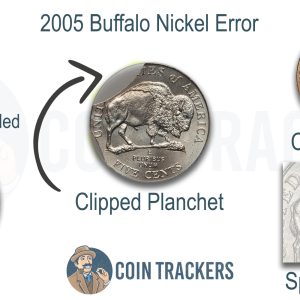
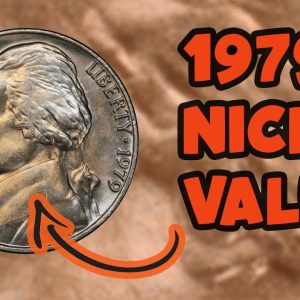
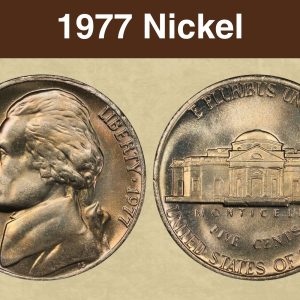
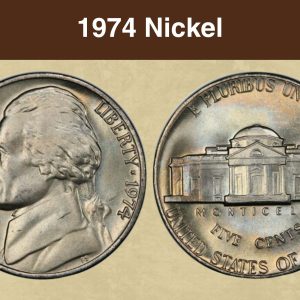
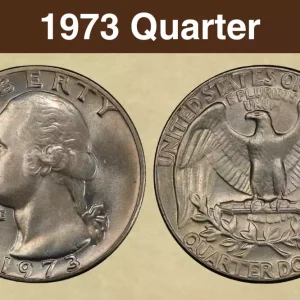
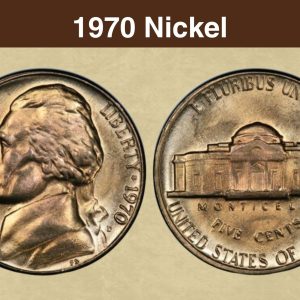
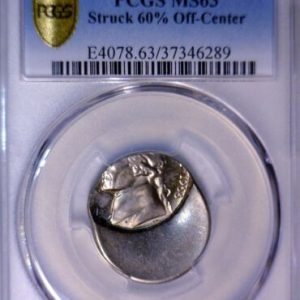
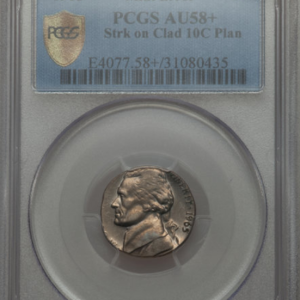
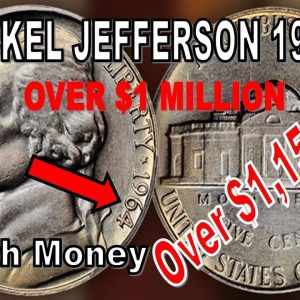
What is the error on the 1943-P nickel?
The two primary error varieties on a 1943-P nickel are the 1943/2 overdate, where the “3” in the date is struck over a “2”, and the doubled die obverse (DDO), which appears as a “doubled eye” on Jefferson, with extra doubling on the inscriptions and date. The overdate is the only overdate in the series, while the DDO is the only doubled die variety with doubling on the obverse.
What makes a 1943-P nickel rare?
A 1943-P nickel isn’t inherently rare, but two varieties are highly valuable: the 1943/2 Overdate (where a “2” shows under the “3” in the date) and the 1943 Doubled Die Obverse, which gives Jefferson a distinct “double eye” and also affects the inscriptions. The presence of “Full Steps” on the reverse is also a key factor in increasing a coin’s value, even for otherwise common 1943-P nickels.
How much is a 1943-P Jefferson nickel worth?
A 1943-P Jefferson nickel’s value ranges from around $1.25 for circulated coins to over $1,250 for uncirculated coins, with the highest values going to rare varieties. The coin is a “wartime nickel” made of a silver alloy, and special varieties like the 1943 over 2 or the 1943-P Doubled Die Obverse (DDO) can be worth significantly more, even in lower grades.
What are error nickels to look for?
Key nickel errors to look for include doubled dies, where design elements are doubled due to die strikes, off-center strikes, where the coin is struck outside its intended position, and mint mark errors, such as doubled or missing mint marks. Other valuable errors are speared bison on 2005 nickels, the 1943 double die Jefferson nickel, and 1937-D Buffalo nickel three legs.